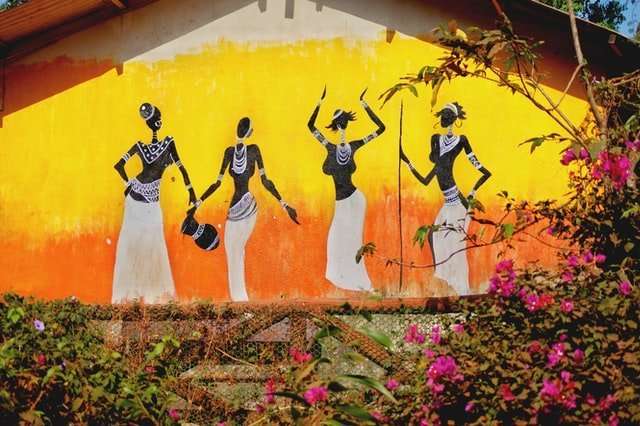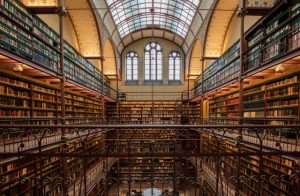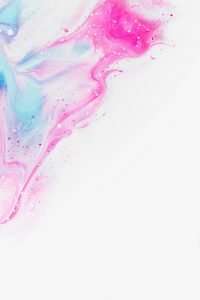I am a psychedelic artist, I have been producing art for about 15 years and I have sold my art to over 30 countries. I have also been teaching people how to make psychedelic art for over 10 years.
And many people have asked me what kind of reaction my art gets from people. Lets take this opportunity to discuss this subject, how do people react to psychedelic art? Do they like it? Or is it something they dislike.
Well the real answer is that it depends on who you ask. Some people love it others are totally turned off by it.
However lets explore the reasons why some people react in one way or another to psychedelic art and what can be done about it.
A psychedelic or visionary art is an art that affects the senses, emotions, and intellect with the intent to enhance spiritual awareness. These works are intended to bring insight into the nature of existence. The word “psychedelic” comes from Ancient Greek: ψυχή (psyche, “soul”) + δηλείν (dēlein, “to manifest”), translating to “soul-manifesting”, and was coined by psychiatrist Humphry Osmond in 1956 while attempting to describe the effects of mescaline.
Trippin’ Gallery is a blog where I am sharing my experience on how people react to psychedelic art. This blog will also include my thoughts on how psychedelics can be used to enhance creativity and psychological growth.
It is important to note that people react differently to psychedelic art. There are those who see a 3D effect, or a fractal pattern, for example. These tend to be the people who are attracted to psychedelic art in the first place. Other people see it as an average painting and move on. This is not necessarily a bad thing; we do not all enjoy the same music or films.
Some people see nothing but 2D patterns or colors; this is not necessarily a bad thing either, but it does tend to mean that they do not see the point of psychedelic art. It is something that can be discussed and debated with others.
There are other ways of reacting to psychedelic art too, such as seeing faces in it. Many people get nervous when they see this; they worry that they are “tripping”. This is generally nothing to worry about, although you should be aware of it if you intend to display your art in public places.
Psychedelic art is a term used to describe the artwork of the 1960s and 70s that had a psychedelic influence. This art was used to express many different emotions, including love, peace and freedom. The artists of this movement explored many different outlets of expression including paintings, prints, posters, sculptures and much more
When it comes to psychedelic art there are so many different types of art pieces. Some focus on bright colors while others focus on political messages. There was even psychedelic music that was very popular during the hippie era. One of the most popular bands was Jefferson Airplane who played music like “White Rabbit”, “Somebody to Love” and “We Can Be Together”.
For many people, these types of art bring back memories from the 60s and 70s when they were young and free. These days people don’t see much psychedelic art unless they visit museums or art galleries from that era. Most of this artwork focuses on the 1960s because it really became popular in the early part of that decade. Even today people are still making psychedelic art but there is much less demand for it because so much was made during those years.
With all that said, people do react differently to this kind of artwork depending on their own personal experiences with psychedelics
Psychedelic art is all about pattern recognition, as a recent study confirms.
The study, published in the journal Psychological Science in March, found that people see different images when they look at the same psychedelic canvas. It also found they see similar images, leading to a theory of how the human brain interprets psychedelics, as well as how we interpret anything.
The researchers showed participants images from paintings created by an algorithm designed to make images with at least some psychedelic qualities. Then they asked the participants to describe what they saw, using words only.
Then the participants were shown new canvases and asked which of them matched the original paintings. Their answers proved that their brains were interpreting the objects differently than the artist’s intention. The artist had painted a diamond or a bicycle tire or a cat face into each canvas; many of the viewers saw something completely different, like a car or a house or a tree. No one saw all three things.” (http://www.nytimes.com/2011/05/28/science/28hallucinat.html)
Psychedelic art is a very important aspect of the psychedelic experience. When your mind and body are completely receptive to positive change, you are able to see the beauty in life that surrounds us. Psychedelic art really brings out this beauty by making otherworldly and abstract images that can only be expressed in these kinds of ways.
Psychedelic art is also in some ways an exploration of consciousness. This kind of art offers a deeper understanding of why we perceive the world the way we do. Sometimes when taking psychedelics, it can be hard to fully grasp what you are seeing at first, but after looking at some psychedelic art, you will have a better understanding of how you see things on a daily basis.
Famous examples of psychedelic art include Salvador Dali’s “The Temptation Of St. Anthony,” and Bob Ross’ “Joyful Trees.” These are just a few examples of some of the best psychedelic art available for viewing today.
Psychedelic art is a term used to refer to the artwork inspired by psychedelic experiences. Such artworks are influenced by hallucinogenic drugs, especially LSD and psilocybin, and the various spiritual philosophies that emphasize “psychedelic” experience(s). The word psychedelic means “mind manifesting”.
On the one hand, psychedelic art has been seen as a symbol of the 1960s due to its association with psychedelic culture and its widespread use during the counterculture movement. On the other hand, it has also been seen in relation to the earlier Surrealist movement and artists such as Remedios Varo and René Magritte. Psychedelic art and music typically try to recreate or reflect the experience of altered consciousness.
The word was first coined in 1956 in an article written by American journalist, author, and Beat Generation figurehead, Ralph Metzner, who wrote an article entitled “A New Word: ‘Psychedelic’ (Senses Distorted)”. It derives from the Greek words psyche (“soul, mind”) and deloun (to make visible, to reveal), translating to “soul-manifesting”.



